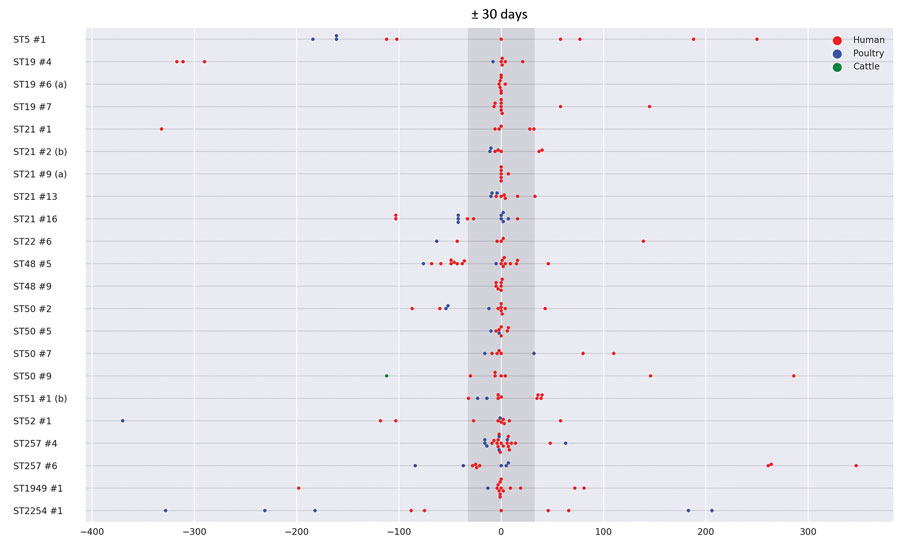Volume 26, Number 3—March 2020
Research
Whole-Genome Sequencing to Detect Numerous Campylobacter jejuni Outbreaks and Match Patient Isolates to Sources, Denmark, 2015–2017
Figure 5

Figure 5. Distribution of large cluster isolates of Campylobacter jejuni from Denmark, over time. The 22 large genetic clusters (>5 clinical isolates) are listed vertically, and the cluster isolates are displayed over time (in days) horizontally. Each cluster is centered at the median date of the cluster isolates (t = 0). Each dot represents an isolate at a certain time, and colors indicate the origin of the isolate. The 6 clusters ST257#6, ST48#5, ST50#9, ST257#4, ST5#1, and ST51#1+ST21#2 are also illustrated in Figure 3. (a) indicates the 2 clusters representing the multistrain outbreak from the fifth CML; (b) indicates the 2 clusters linked by the same patient having an isolate part of each cluster.
Page created: February 20, 2020
Page updated: February 20, 2020
Page reviewed: February 20, 2020
The conclusions, findings, and opinions expressed by authors contributing to this journal do not necessarily reflect the official position of the U.S. Department of Health and Human Services, the Public Health Service, the Centers for Disease Control and Prevention, or the authors' affiliated institutions. Use of trade names is for identification only and does not imply endorsement by any of the groups named above.